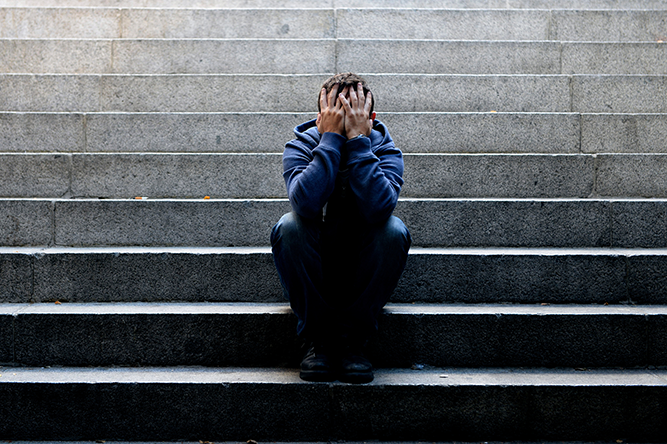Witnessing a child engage in self-injurious behavior (SIB) is a deeply distressing and challenging experience for any parent or caregiver. These behaviors, which can range from head-banging and biting to skin-picking, often leave families feeling helpless, overwhelmed, and unsure of how to provide the right support. It’s a journey filled with questions and the urgent need for effective, compassionate solutions.
If you are navigating this difficult path, know that you are not alone. Understanding the reasons behind these behaviors is the first step toward managing them. This guide aims to provide clarity and practical guidance on self-injurious behaviors, particularly in children with developmental conditions like Autism Spectrum Disorder (ASD). We will explore what SIB is, why it happens, and what steps you can take to ensure your child’s safety and well-being. With the right strategies and professional support, it is possible to reduce these behaviors and help your child thrive.
Understanding Self-Injurious Behavior (SIB)
Self-injurious behavior refers to any action that an individual inflicts upon themselves that results in physical injury. These actions are often repetitive and can vary in intensity from mild to severe. Common examples include:
- Head-banging: Repeatedly hitting the head against hard surfaces like walls, floors, or furniture.
- Biting: Biting hands, arms, or other body parts.
- Scratching or skin-picking: Persistently scratching or picking at the skin, sometimes to the point of drawing blood.
- Hair-pulling: Pulling out one’s own hair.
- Hitting: Hitting oneself with hands or objects.
While SIB can occur in various populations, it is more prevalent among individuals with developmental disabilities. Research indicates that a significant percentage of children and adults with Autism Spectrum Disorder engage in some form of self-injury. These behaviors not only pose an immediate risk of physical harm but also interfere with learning, socialization, and overall quality of life.
Why Does Self-Injurious Behavior Occur?
Understanding the “why” behind self-injurious behavior is crucial for developing an effective intervention plan. SIB is a complex behavior that is rarely caused by a single factor. In the field of Applied Behavior Analysis (ABA), these reasons are known as the “functions” of behavior. Identifying the function helps us understand what the child is trying to achieve or communicate through their actions.
There are four primary functions of behavior:
- Attention: The child may engage in SIB to gain attention from parents, teachers, or peers. Even negative attention, like being told to stop, can reinforce the behavior if the child is seeking any form of social interaction.
- Escape or Avoidance: Self-injury can be a way to escape or avoid a non-preferred task or situation. For example, a child might start head-banging when asked to do homework, knowing that the behavior will likely lead to the task being removed.
- Access to Tangibles: Sometimes, SIB is used to get access to a preferred item or activity. A child might learn that hitting themselves results in getting a toy, a snack, or screen time.
- Automatic Reinforcement (Sensory): This is one of the most common functions for SIB. The behavior itself produces an internal sensation that is either pleasurable or serves to relieve pain or discomfort. It might provide sensory stimulation (in an under-stimulating environment) or block out overwhelming sensory input (in an over-stimulating environment). Some theories suggest it may release endorphins, which can have a pain-relieving or calming effect.
In addition to these functions, medical issues can also contribute to SIB. A child might engage in head-banging to cope with the pain of an ear infection or hit their stomach due to gastrointestinal discomfort. It is essential to rule out any underlying medical conditions with a physician.
A Guide to Providing Safety and Support
Addressing SIB requires a multi-faceted approach focused on safety, understanding the behavior’s function, and teaching alternative skills. Here are actionable steps you can take:
1. Ensure Immediate Safety
The first priority is to prevent serious injury. This may involve modifying the environment to make it safer.
- Protective Gear: In some cases, a helmet or padded clothing may be necessary to prevent injury during episodes of head-banging or hitting.
- Environmental Padding: Padding hard surfaces like walls, floors, or sharp corners can reduce the risk of harm.
- Blocking and Redirecting: Learn safe and non-intrusive ways to block the self-injurious action and redirect your child to a safer activity. This should be done calmly and without giving excessive attention to the behavior.
2. Identify the Function of the Behavior
A Board Certified Behavior Analyst (BCBA) can conduct a Functional Behavior Assessment (FBA). This is a systematic process used to determine the function of the SIB. An FBA typically involves:
- Direct Observation: Watching the child in different settings to see when the behavior occurs.
- Data Collection: Recording information about what happens right before (antecedent) and right after (consequence) the SIB.
- Interviews: Talking with parents, caregivers, and teachers to gather more information.
Once the function is identified, an individualized Behavior Intervention Plan (BIP) can be created.
3. Implement a Behavior Intervention Plan (BIP)
A BIP outlines strategies to reduce SIB and teach replacement behaviors.
- Teach Communication Skills: If the behavior is a form of communication, teach the child a more appropriate way to express their needs. For example, if a child hits their head to escape a task, teach them to use a sign, a picture card, or words to ask for a break.
- Modify the Environment: Make changes to the environment to prevent the behavior from occurring. If a child engages in SIB when they are under-stimulated, provide more sensory activities. If it happens during noisy, crowded situations, find ways to reduce overwhelming sensory input.
- Reinforce Appropriate Behavior: Provide positive reinforcement (praise, rewards) when the child uses the replacement skills or refrains from SIB. This makes the appropriate behavior more rewarding than the self-injury.
4. Seek Professional Support
Managing SIB can be incredibly challenging, and you don’t have to do it alone. Professional guidance is key. Kids Club ABA provides expert-led services to help families navigate these difficulties. Our team of dedicated BCBAs and therapists specializes in creating personalized intervention plans that address the root causes of self-injurious behaviors. At Kids Club ABA, we believe in a collaborative approach, working closely with families to implement strategies that are both effective and sustainable.
Building a Path Forward
Addressing self-injurious behavior is a marathon, not a sprint. It requires patience, consistency, and a deep well of compassion for your child and for yourself. Remember that SIB is a form of communication, a signal that your child has an unmet need. By working to understand that need and teaching them safer, more effective ways to communicate, you can help them find a better path.
If you are struggling to manage your child’s self-injurious behaviors, professional help is available. The team at Kids Club ABA is here to provide the expertise and support your family needs. By partnering with experienced professionals, you can develop a comprehensive plan to ensure your child’s safety, reduce challenging behaviors, and unlock their full potential. Take the first step today by reaching out for a consultation.

